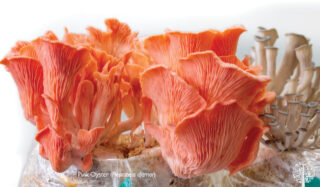If you’re a practised controlled environment grower, you may be very accustomed to using technology, tools and techniques to try and reproduce the exact conditions favoured by your species under cultivation. Of course, the ideal would be to give them everything they need and nothing they don’t want. But for most growers, maintaining a reasonable environmental range based on the available resource input sets the parameters for which conditions and how much one can control best.
Reduce Energy Expense
To reduce energy expense, where possible, use passive systems of temperature mitigation like insulation, natural shade from deciduous leaves in the summer heat, and ventilation with chimney turbines. Once the most reasonably achieved conditions are determined, no longer aim to control the environment further; instead, control the species selection.
Species Selection
Using your recorded conditions, look for species from regions of the world that have natural seasonal patterns similar to your growing environment. Combining the high heat in summer with the necessary humidity for mushroom formation mimics tropical homes for varieties like the Pink Oyster (Pleuroteus djamor). As the heat can be stressful on spring and autumn-favoring mushrooms, many northern growers supplement their harvest with these in the peak heat season. Cold snaps are more damaging to these types, which narrows their production window and restricts the likelihood of their naturalization in the home environment.


If growing similar species, like a selection of different Pleuroteus subtypes from other regions of the world, it makes sense that the occasions of their maximum production would occur at different times when they are in (controlled for) a specific place.
This relative seasonal variation is a function of the conditions unique to the geographical location where each type evolved to prosper. Their life cycle events happen at different temperatures because the local conditions of their evolution are also different.
Thorough Research
To determine which additional species are good candidates, where data is available, seek opportunities to try growing subtypes with natural places of origin that resemble the conditions of your geographical location. As fungi can reproduce and genetically change rapidly, consider the possible consequences of introducing new types to your local wild environment. Harvest mushrooms under cultivation before heavy spore release, and filter air from the fruiting space before it reaches the wild.
Still, if spent substrates are distributed outdoors, the chance of wild fruiting remains present, especially if seasonal parameters are very similar. Each land steward will have their unique approach to deciding whether this is a desirable or undesirable possibility.
Some may argue that climate change is a good enough reason to allow species resilient in ‘neighboring’ climate zones (hotter than one’s own at the current time) to interact with local types in hopes of developing variation tolerance. Additionally, some species are at risk of becoming extinct in their home environments, and their replication and propagation in more places could be considered a means of helping to preserve global diversity.


Localized varietals, particularly if found in the wild thriving on the same or similar substrate you use in your grow, are a good choice in many cases. The collected culture may, however, not have an especially vigorous growth pattern and could underperform next to commercialized varieties selected by microscopy practitioners.
Only by subjecting multiple types to a parallel, well-controlled test will you know if any are outpaced by the other targeted crops or competitor species within the substrate (leading to contamination and yield reduction).
Aside from being resource-advantageous, trying different types of oyster mushrooms can also lead to discoveries about which ones are marketable or otherwise attractive, offering a look, taste, or texture, unlike others in your collection. For example, Yellow Oysters (P. citrinopileatus) and Popcorn (or Branched) Oysters (P. cornucopiae) pin in clusters, growing many more and smaller caps than Blue Oysters and Phoenix types (P. columbinus and P.pulmonarius, respectively).
Once you have practiced this kind of selection on similar varieties, you will have collected enough information to predict which other types of fungi are likely to succeed in your system. Chestnut mushrooms (Pholiota adiposa) and lion’s mane types (Hericiaceae) are popular choices for sharing growing space with cooler-climate oysters.
Remaining open to new ideas, observing, and sharing results and cultures allows for enriched experiences in mycology. By practicing fluidity and control in tandem rather than conflict, cultivators mark their pathway to improved yields and provide tangible evidence of the benefits of mushroom appreciation in every community.
